7 Enterprise Customer Engagement Examples to Boost Retention
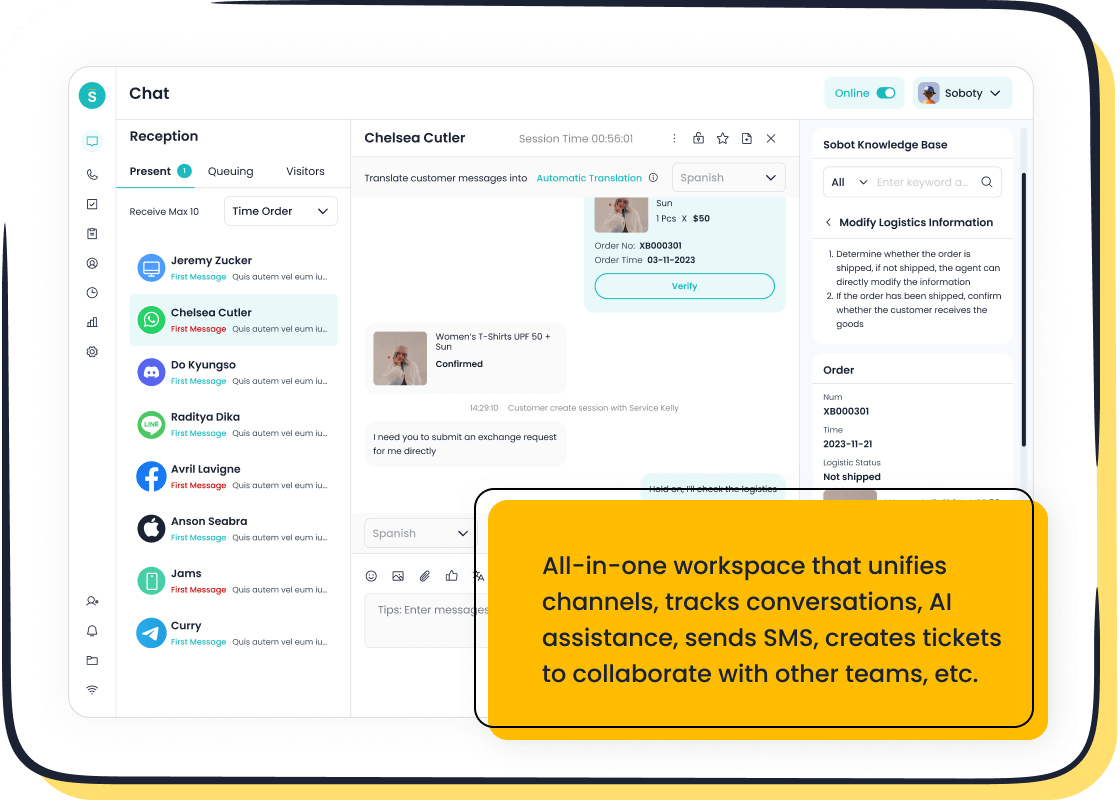
Enterprises face fierce competition when trying to keep customers loyal. Industry reports show that the media and professional services sector leads with an average customer retention rate of 84%, while retail holds at 63%. 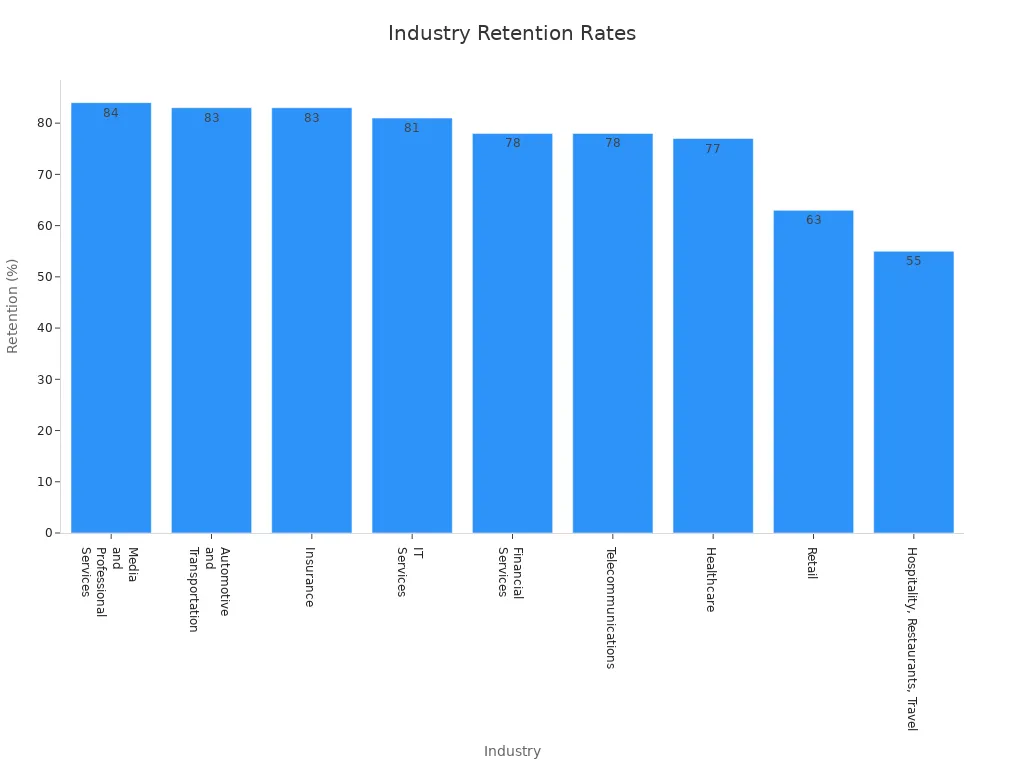 Companies that focus on customer engagement for enterprise often see higher profits and longer customer relationships. Sobot delivers advanced solutions like Sobot AI to help organizations build strong connections and improve service. Every business can adapt these approaches to fit its needs and see real results.
Companies that focus on customer engagement for enterprise often see higher profits and longer customer relationships. Sobot delivers advanced solutions like Sobot AI to help organizations build strong connections and improve service. Every business can adapt these approaches to fit its needs and see real results.
Omnichannel Engagement
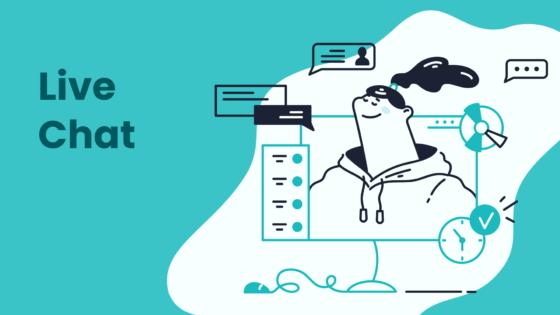
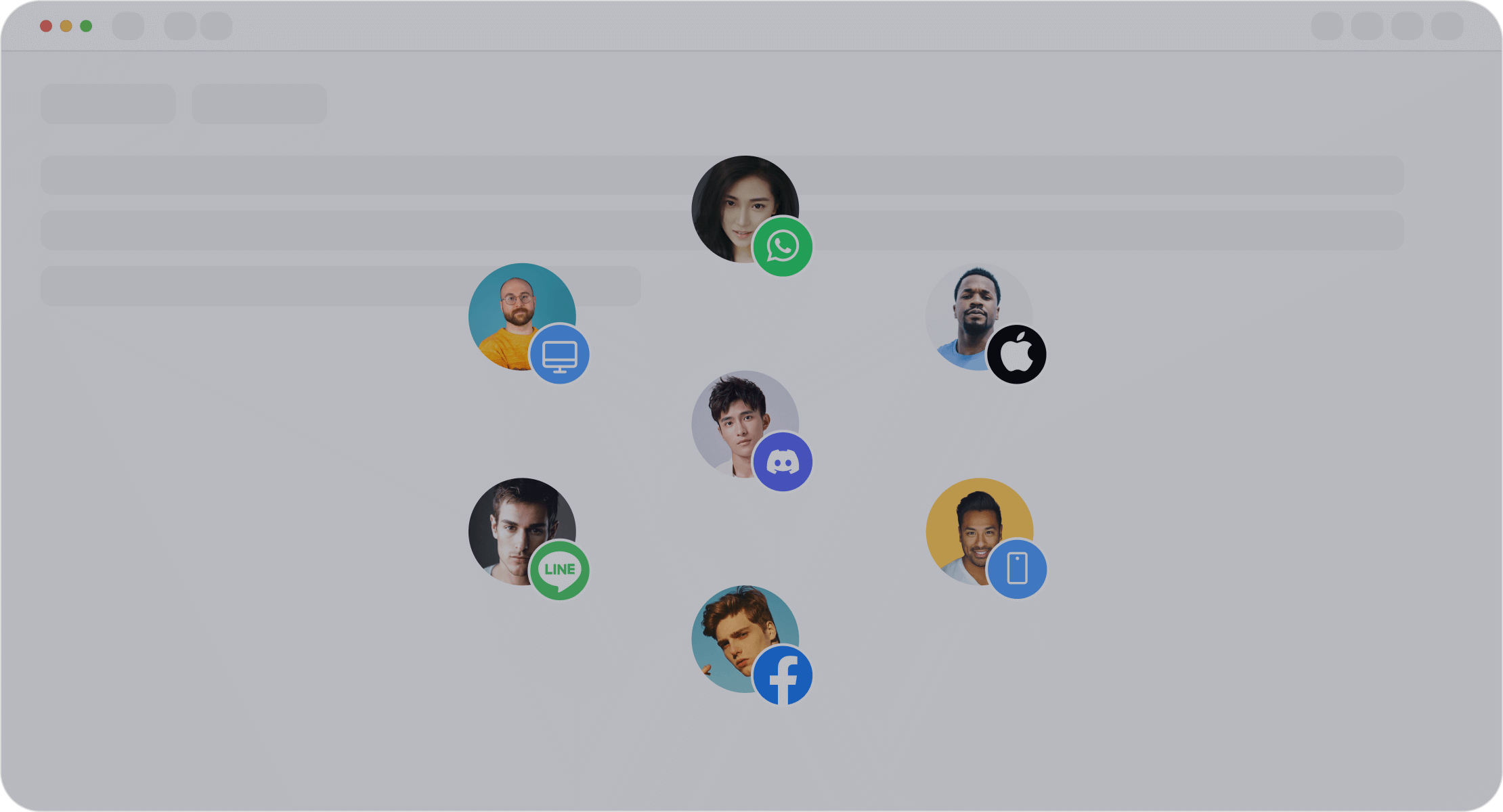
Sobot Live Chat Integration
Enterprises today must deliver a seamless customer experience across every channel. Omnichannel engagement connects clients through websites, apps, and social media, creating meaningful touchpoints that drive loyalty. Research shows that companies using omnichannel engagement strategies retain 89% of their clients, while those with weak strategies keep only 33% (Invesp). This approach ensures every client interaction feels personal and consistent, no matter where it happens.
Sobot Live Chat stands out as a powerful tool for this strategy. It supports communication on websites, mobile apps, WhatsApp, Facebook, Instagram, Telegram, and Discord. Clients can reach support teams anytime, and agents see all client interactions in one unified workspace. Sobot’s AI-powered chatbots and analytics help companies profile clients and personalize service, leading to a 38% increase in conversion rates. Large clients like OPPO have seen a 57% rise in repurchase rates after using Sobot. These features help enterprises deliver a frictionless experience and boost satisfaction.
Companies using Sobot report improved customer satisfaction and lower costs, thanks to AI-driven automation and smart integration with CRM systems.
Implementation Steps
Enterprises can follow these steps to implement an effective omnichannel customer engagement strategy with Sobot Live Chat:
- Assess Current Channels: Identify where clients interact most—web, app, or social media.
- Integrate Sobot Live Chat: Connect all channels to Sobot’s unified platform for real-time client interactions.
- Enable AI Tools: Use Sobot’s AI features for client profiling and personalized responses.
- Train Teams: Teach agents to manage all client interactions from a single workspace.
- Monitor KPIs: Track key metrics like Customer Lifetime Value, Conversion Rate, and Customer Retention Rate.
| KPI Name | Description | Importance |
|---|---|---|
| Customer Lifetime Value | Total value of a client over their relationship | Guides strategic decisions |
| Conversion Rate | Percentage of users completing high-value actions | Measures effectiveness of engagement |
| Customer Retention Rate | Percentage of clients who stay with the company | Shows loyalty and satisfaction |
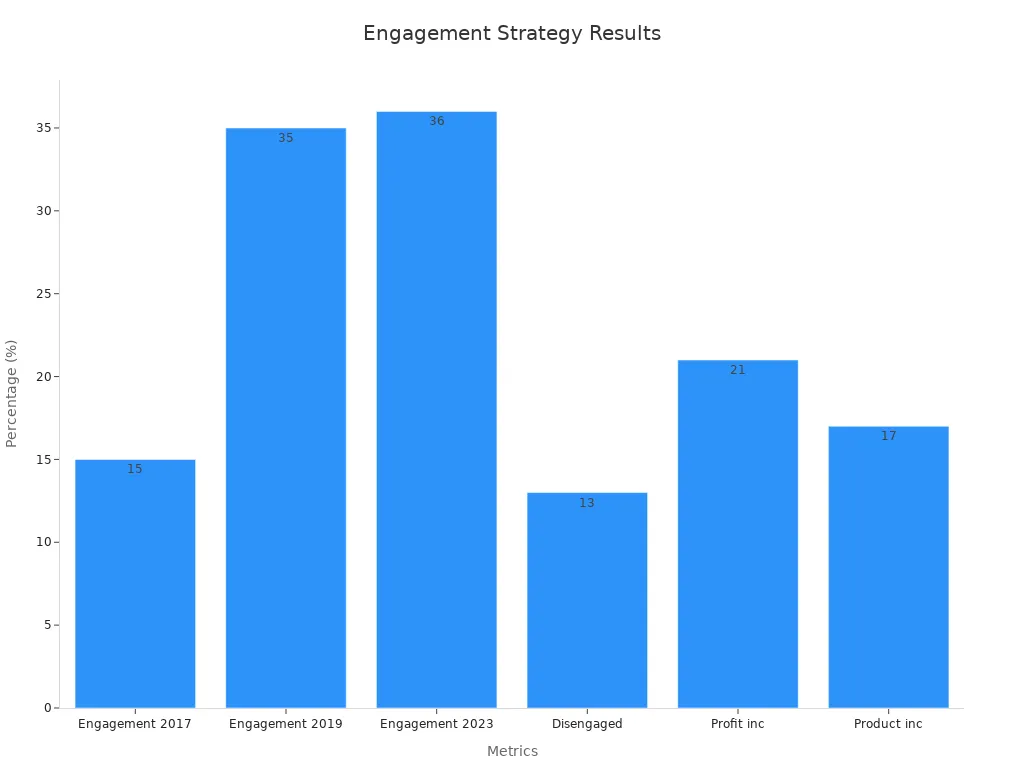
By following these steps, enterprises can create a strong customer engagement strategy that unifies client interactions and builds lasting relationships.
Proactive Customer Support
Real-Time Solutions
Proactive customer support transforms the way enterprises meet customer expectations. Instead of waiting for issues to arise, companies anticipate needs and reach out before problems escalate. This approach reduces response times and increases satisfaction. Enterprises that adopt proactive strategies often see measurable improvements in their support operations.
The following table highlights the impact of proactive support in enterprise environments:
| Improvement Metric | Reported Change | Timeframe |
|---|---|---|
| Average response time | Reduced from 24 hours to 12 hours | Not specified |
| Average complaint resolution time | Reduced from 48 hours to 24 hours | Within 6 months |
| Tickets resolved per agent per day | Increased by 20% | Within next quarter |
| Reduction in support tickets | 20% decrease | Within 6 months |
These results show that proactive support not only speeds up service but also empowers agents to handle more requests each day. Customers benefit from faster solutions and fewer unresolved issues.
Sobot in Action
Sobot’s AI-powered tools enable enterprises to deliver real-time, personalized engagement. The platform uses predictive analytics to identify potential issues and reach out to customers before they contact support. This reduces customer effort by 25% and increases satisfaction by 10%. Companies like OPPO have achieved an 83% chatbot resolution rate and a 57% increase in repurchase rates after implementing Sobot’s solutions.
- Sobot’s AI chatbots provide personalized interactions, using sentiment analysis to create empathetic responses.
- Predictive analytics help agents resolve problems before customers notice them.
- Proactive communication reduces churn and opens new upsell opportunities.
By meeting customer expectations with timely, personalized engagement, enterprises can build trust and loyalty. Sobot’s real-time solutions set a new standard for proactive customer support.
Customer Engagement for Enterprise: Loyalty Programs
Program Design
Customer engagement for enterprise often relies on well-structured customer loyalty programs. These programs help large organizations retain clients and drive repeat business. Research shows that 83% of consumers make repeat purchases because of loyalty programs, and 85% say these programs increase their likelihood to stay with a brand. Companies see strong financial results as well. A 5% increase in retention can boost profits by up to 95% (source).
Effective program design starts with clear objectives and input from stakeholders. Enterprises should assess company culture, customer demographics, and competition. The next step involves building the program structure, including tiering, value proposition, and rewards. Launch plans should use multi-channel marketing and ongoing support. Metrics like repeat purchase rate, average order value, and customer retention rate help measure success. Personalization and flexibility remain key. Programs that use data to tailor rewards and recognize top clients see higher engagement and loyalty.
Tip: Enterprises can use Sobot’s retail solutions to automate loyalty campaigns, track customer behavior, and deliver personalized rewards across channels.
Enterprise Examples
Leading brands show how customer engagement for enterprise can thrive with innovative customer loyalty programs. Boots uses a points-based system with app integration, reaching 16.3 million active members and encouraging repeat purchases. EQUIVA’s omnichannel program doubled buyer frequency. Brands like dacadoo and limango use gamification to boost engagement and order value.
| Brand | Loyalty Feature | Impact |
|---|---|---|
| Boots | Points, app integration | 16.3M members, higher repeat purchases |
| EQUIVA | Omnichannel program | Doubled buyer frequency |
| dacadoo | In-app gamification | 62% more user engagement |
| limango | Gamified loyalty program | 41% higher average order value |
Sobot’s retail solution enables enterprises to launch similar programs. Companies can unify data, automate rewards, and personalize offers, driving customer loyalty and retention. Customer engagement for enterprise grows stronger when loyalty programs focus on experience and value.
Feedback Loops
Collecting Insights
Enterprises that listen to their customers gain a clear advantage. Feedback loops help companies understand each stage of the customer journey. By collecting insights through customer feedback surveys, live chat, and social listening, organizations can identify what matters most to their clients. Sobot’s analytics platform makes this process simple. Teams can launch customer feedback surveys across multiple channels, then analyze the results in real time.
Companies that use structured feedback loops see a 30% increase in customer satisfaction and a 15% boost in revenue growth. Personalized outreach based on feedback can raise response rates by over 30%.
A well-designed feedback loop includes several steps:
- Gather feedback using surveys, interviews, and chat interactions.
- Analyze data to spot trends and pain points.
- Respond to customers, closing the loop and showing their voices matter.
- Apply insights to improve products and services.
- Follow up to ensure satisfaction and ongoing improvement.
Sobot’s survey tools allow enterprises to filter results by date, location, or team. Teams can view graphical reports, track Net Promoter Score (NPS), and monitor trends over time. This approach helps companies adapt quickly and keep customers engaged throughout the customer journey.
| Metric | Improvement/Outcome |
|---|---|
| Customer satisfaction | 30% increase |
| Conversion rates | 30% increase |
| Revenue growth | 15% increase |
| ROI | Over 300% within two years |
Acting on Feedback
Collecting feedback is only the first step. Enterprises must act on insights to drive real change. Sobot’s analytics dashboard highlights key metrics such as Customer Satisfaction Score (CSAT), Customer Effort Score (CES), and First Contact Resolution (FCR). These indicators show where teams excel and where improvement is needed.
Fast action on feedback reduces churn and increases loyalty. Companies that respond to customer feedback surveys see retention rates rise by up to 30%.
Performance metrics like NPS and CSAT link directly to business outcomes. For example, a higher Customer Retention Rate means more loyal clients and greater profitability. Sobot’s real-time reporting enables immediate action, helping teams resolve issues faster and improve the overall experience.
| Performance Metric | Business Impact |
|---|---|
| Customer Retention Rate | 25-30% higher with active feedback management |
| Product Development | 65% success rate when feedback guides innovation |
| Market Adaptation | 35% faster response to changing needs |
By closing the loop, enterprises show customers that their opinions drive progress. This commitment builds trust and strengthens every step of the customer journey.
Community Building
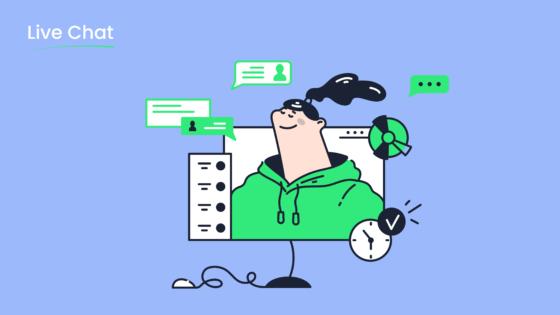
Enterprises recognize that strong communities drive deeper engagement and loyalty. Building a brand community helps clients connect, share experiences, and support each other. Research shows that 84% of consumers say community impacts how they feel about a brand, and 80% are more likely to purchase new products when part of a brand community. These communities increase client lifetime value, reduce acquisition costs, and create long-term relationships.
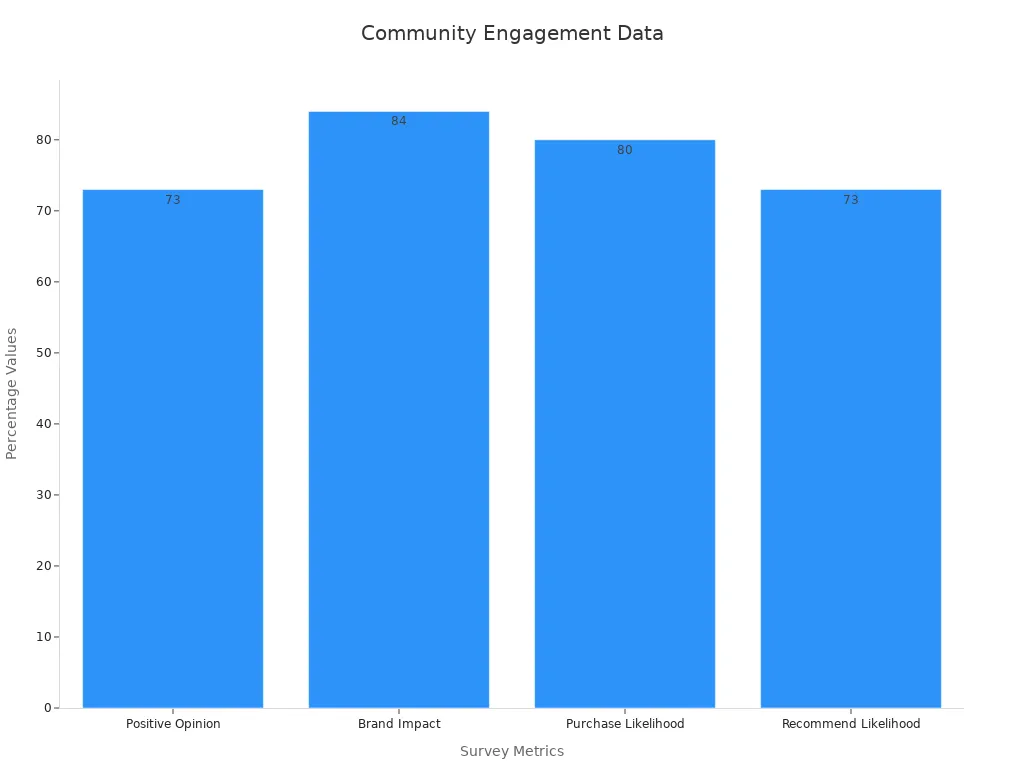
Peer Support
Peer support forms the foundation of many successful enterprise communities. Clients often seek advice from others who have faced similar challenges. Peer groups provide practical knowledge and emotional encouragement. For example, in healthcare and technology, peer mentors help new clients navigate complex systems and boost confidence. Participants in peer support programs report higher self-esteem and a sense of belonging. These groups also reduce anxiety and foster sustainable wellbeing, especially for underserved communities.
Sobot supports peer-to-peer engagement by enabling real-time communication through digital platforms. Clients can join forums, share insights, and collaborate on solutions. This approach transforms client interactions from simple transactions into meaningful connections. Enterprises that encourage peer support see improved client relationships and stronger brand loyalty.
Brand Advocacy
Brand advocacy amplifies the voice of satisfied clients and employees. When clients share positive experiences, they influence others and build trust. Data from Social Media Today shows a 26% increase in annual revenue growth for companies with employee advocacy programs. Employee-shared content receives eight times more engagement than brand posts, according to LinkedIn. Companies like Apple and Salesforce have built passionate communities where advocates promote products and offer support.
| Company/Source | Statistic/Result | Impact on Engagement/Business Outcome |
|---|---|---|
| Employee-shared content gets 8x more engagement than brand content | Higher client engagement and trust | |
| Adobe | 33% increase in social followers; 68% increase in content sharing | Boosts brand awareness and employee involvement |
| Salesforce | 561% increase in brand visibility through employee advocacy | Amplifies brand reach and client connection |
Sobot’s community features help enterprises identify advocates and empower them to share stories. By integrating social sharing, feedback tools, and exclusive events, Sobot enables clients to become brand champions. This strategy strengthens client interactions and encourages referrals, driving business growth.
Success Stories: Michael Kors & Sobot
Challenge & Solution
Michael Kors, a global luxury fashion brand, faced challenges in delivering a seamless customer experience across multiple channels. The company needed to improve customer engagement, reduce response times, and personalize service for a diverse, international audience. Michael Kors also wanted to enhance risk management and supply chain visibility while supporting sustainability goals.
To address these needs, Michael Kors implemented Sobot’s all-in-one contact center platform. The solution unified customer interactions from phone, chat, and social media into a single workspace. Sobot’s AI-powered tools enabled real-time tracking of customer feedback and automated responses. The platform also integrated with internal systems, such as CRM and order management, to provide agents with a complete view of each customer. Michael Kors used advanced features like AI-driven demand forecasting and the ‘Company’ decision-making tool to evaluate risk and prioritize investments. These steps helped the brand deliver personalized experiences and improve operational efficiency.
| Challenge / Focus Area | Solution Implemented | Success Metrics Recorded |
|---|---|---|
| Personalization in customer experience | AI assistant for product discovery | 15-20% higher conversion rates; enhanced engagement |
| Environmental sustainability | AI-powered tracking of environmental impact | 22% reduction in eyewear return rates |
| Supply chain visibility | AI-enabled supply chain ethics monitoring | Improved transparency and compliance |
| Risk management | ‘Company’ decision-making tool | Better risk prioritization and investment effectiveness |
Results & Takeaways
The partnership between Michael Kors and Sobot produced measurable results. The company achieved an 83% reduction in response time and a 95% customer satisfaction rate. Conversion rates increased by 20%, and the use of AI tools led to a 15% boost in demand forecasting accuracy. Michael Kors also saw a 22% drop in eyewear return rates, supporting sustainability efforts.
Key takeaways for enterprises include:
- Unified platforms streamline customer engagement and improve efficiency.
- AI-driven personalization increases conversion and customer loyalty.
- Real-world examples like Michael Kors set industry benchmarks for success stories.
- Measurable outcomes, such as cost savings and higher retention rates, demonstrate the value of integrated solutions.
- Ongoing innovation and data-driven decision-making support long-term growth.
Customer testimonials and before-and-after comparisons highlight the impact of these success stories. Enterprises can use these insights to guide their own engagement strategies and achieve similar results.
Best Practices for Customer Engagement
Strategy Alignment
Enterprises achieve the most value from an effective customer engagement strategy when they align it with business goals. Leaders focus on audience targeting, content relevance, and timely, personalized follow-up. Teams from sales, marketing, and support coordinate messaging and share insights. This cross-team alignment ensures a consistent customer-centric approach.
Key practices for aligning customer engagement for enterprise include:
- Define clear engagement goals that match business objectives, such as reducing churn or increasing retention.
- Segment clients by needs and behaviors to tailor engagement efforts.
- Map the customer journey to identify important touchpoints.
- Use tools like Sobot’s unified platform to centralize communication and automate workflows.
- Personalize communication using AI-driven insights and customer data.
- Maintain a consistent brand voice across all channels.
- Adopt omnichannel strategies to deliver seamless experiences.
Sobot’s solutions empower enterprises to unify data, automate engagement, and personalize every interaction. This approach helps teams deliver an effective customer engagement strategy that drives loyalty and growth.
Measuring Success
Measuring the impact of a customer engagement strategy requires tracking the right customer engagement metrics. Enterprises monitor both quantitative and qualitative data to understand performance. Metrics such as Customer Satisfaction Score (CSAT), Net Promoter Score (NPS), churn rate, and Customer Lifetime Value (CLV) provide a clear view of engagement outcomes.
| Metric | What It Measures | Enterprise Impact |
|---|---|---|
| CSAT | Customer satisfaction with service | Higher loyalty and repeat business |
| NPS | Likelihood of customers recommending the brand | Stronger advocacy and market growth |
| Churn Rate | Percentage of customers lost over time | Early warning for retention strategies |
| CLV | Total value a customer brings over their lifetime | Guides investment in engagement initiatives |
Sobot’s analytics dashboard enables real-time tracking of these metrics, helping enterprises refine their effective customer engagement strategy. By combining feedback, analytics, and automation, organizations can predict retention trends and optimize every stage of engagement.
Customer engagement for enterprise directly drives retention and long-term growth. Companies using multiple customer engagement for enterprise strategies—like omnichannel support, loyalty programs, and feedback loops—see up to 89% retention rates and profit increases of 25% to 95% (Bain & Company). Sobot empowers organizations to unify channels, personalize experiences, and automate engagement, making customer engagement for enterprise both scalable and effective. Leaders should review their current customer engagement for enterprise approach, start with one or two proven strategies, and track metrics such as Net Promoter Score and Customer Lifetime Value. By taking these steps, enterprises can boost retention and maximize the impact of customer engagement for enterprise.
FAQ
What is the most effective way for enterprises to boost customer retention?
Enterprises see the best results by combining omnichannel engagement, proactive support, and loyalty programs. For example, Sobot clients report up to 89% retention rates after using these strategies. A customer onboarding checklist also helps ensure every new client receives consistent service.
How does Sobot support enterprise customer engagement?
Sobot provides an all-in-one contact center platform with live chat, AI chatbots, and analytics. These tools unify communication across channels. Many enterprises use a customer onboarding checklist to guide new clients through setup, ensuring a smooth start and higher satisfaction.
Why is a customer onboarding checklist important for large organizations?
A customer onboarding checklist ensures every step of the onboarding process is clear and consistent. This reduces errors and improves client satisfaction. Research shows that companies using onboarding checklists see a 50% increase in customer retention rates (source).
Can Sobot integrate with existing enterprise systems?
Yes. Sobot integrates with CRM, order management, and e-commerce platforms. This allows enterprises to automate workflows and personalize service. Many organizations include integration steps in their customer onboarding checklist to streamline the process.
What metrics should enterprises track to measure engagement success?
Key metrics include Customer Satisfaction Score (CSAT), Net Promoter Score (NPS), and Customer Lifetime Value (CLV). Enterprises often add these metrics to their customer onboarding checklist to monitor progress from the start and adjust strategies as needed.
See Also
Effective Ways To Improve Customer Satisfaction Through Live Chat
Enhance SaaS Customer Support Using Proven Live Chat Methods
Leading Customer Service Software Solutions To Watch In 2024
